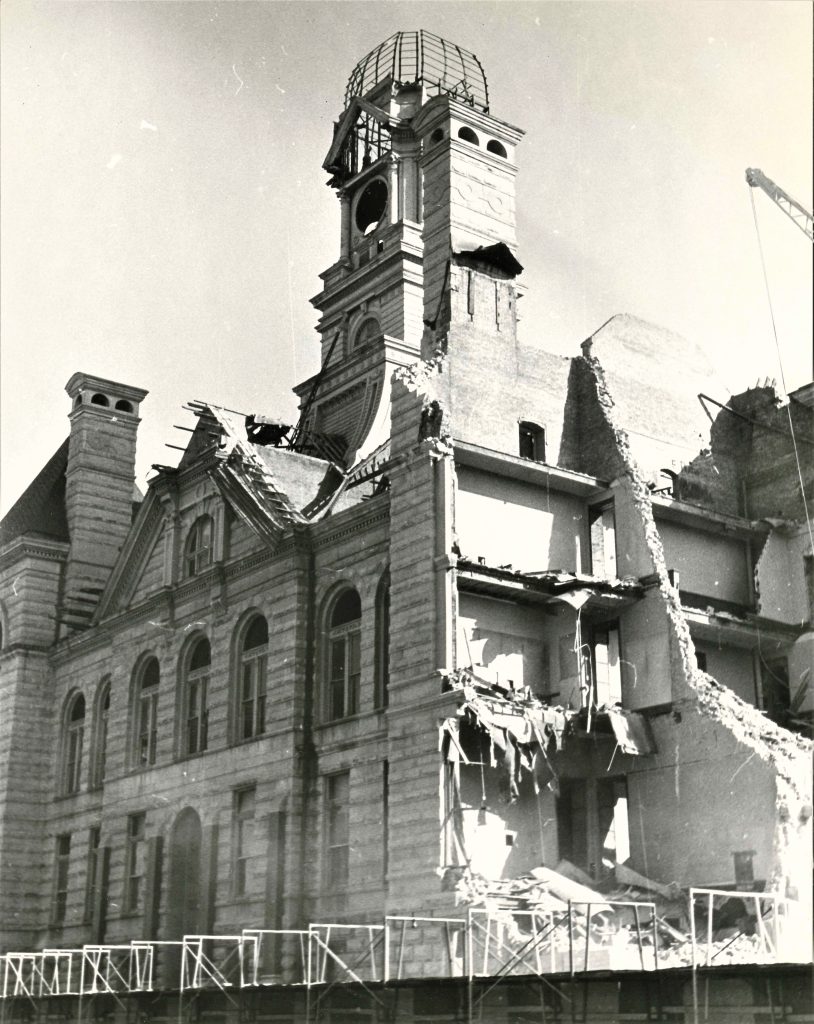Remembering those we lost

Editor’s note: Sandy Vasko is on vacation. We are re-running one of her past columns.
By Sandy Vasko
I’ve been told that a picture is worth a thousand words. In this case I think it’s true. Today we are going to look at what we have lost already, and why we fight to preserve what is left.
Let’s start in Wilmington with the Soldiers’ Widows’ Home on the banks of the Kankakee River. It was created by a charitable commission and funded by the State of Illinois. Originally built to house the widows and children of Civil War soldiers, it went on to be the last refuge for widows of six wars.
In the early 1970s, the state consolidated its veterans’ homes, then housed what was then termed “juvenile delinquents.” They sent the inmates to Quincy, and they promptly burned it down.
While in Wilmington, we must talk about the C & A depot, built after the flood of 1857 on higher ground, it was the hub of the city. Hotels built up around it, Civil War troops departed from it, and people from surrounding townships crowded the platform on their way to Springfield or Chicago.
Its location was its demise. Built within feet of the tracks, the depot became a safety hazard. A movement to save it was unsuccessful, and it was demolished on February 7, 2012.
Another institution for the unfortunate was the Swedish Orphan’s Home in Joliet, formerly located just east of the new Nowell Park Park District building. It was a massive limestone structure surrounded by grass, trees and a small stream.
During the Depression of the 1930s, it was full to capacity. I have spoken with a man who grew up there, and he remembers it fondly. It was demolished because the building could not keep up with modern conveniences such as heat, good lighting, etc.
While we are in Joliet, we must speak of another massive limestone structure, the old courthouse. Built in 1887, it was beautiful inside and out. Its four-sided clock, mounted on a tower, its square corner towers giving the impression of a fort, the mahogany-carved panels on the walls – all of it was impressive.
But the demands of modern life were not suited to this building, either, so it was demolished to make way for the current courthouse, which will soon also be demolished. Fortunately, the mahogany panels can still be seen in the lobby of the present-day county office building.
Going north to Lockport, the beautiful Seven-Arches bridge was an architectural masterpiece. Also built of limestone, the graceful arches reminded you of Roman bridges you have seen in the movies. Located on busy 9th Street, it was replaced by the present-day bridge which rises above it.
It earned the honor of becoming a Will County Landmark before it was damaged by a storm in March of 2011. The City of Lockport demolished the remainder. However, it is still being preserved, as the pieces of limestone can be found all over Lockport as part of the beautification project.
Our last example is one that I have little information about, but many readers will remember: Manhattan State Bank, located on a wedge of land, necessitating an almost blunted arrow shape. Beginning in 1940, it also housed the Manhattan Public Library. I don’t know when it was demolished; perhaps some of our readers will.
If you are interested in seeing other landmarks in Will County, or landmarking your own buildings visit https://www.willcountyillinois.com/County-Offices/Economic-Development/Land-Use/Development-Review/Historic-Preservation.
Sandy Vasko is chair of the Will County Historic Preservation Commission.